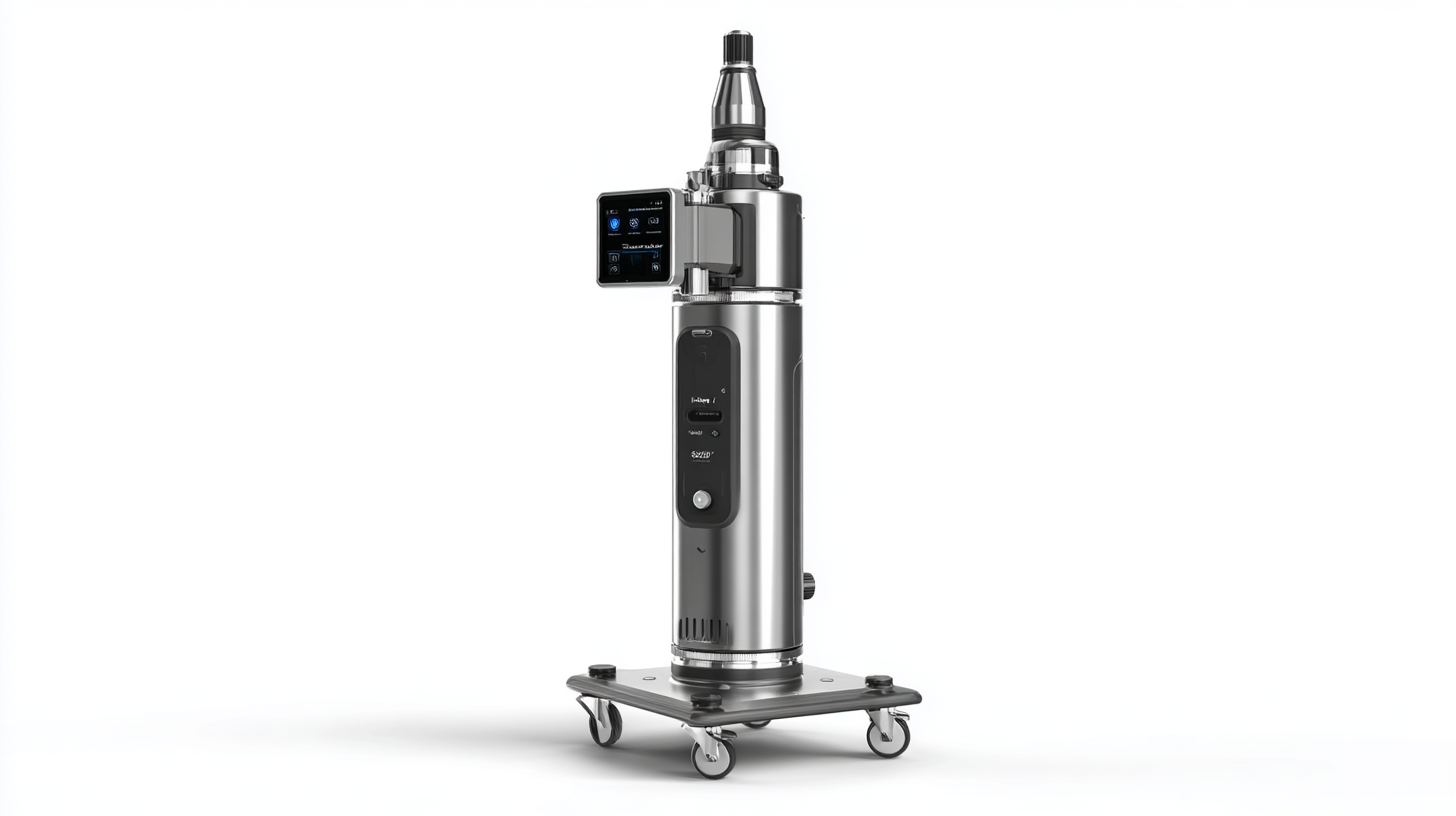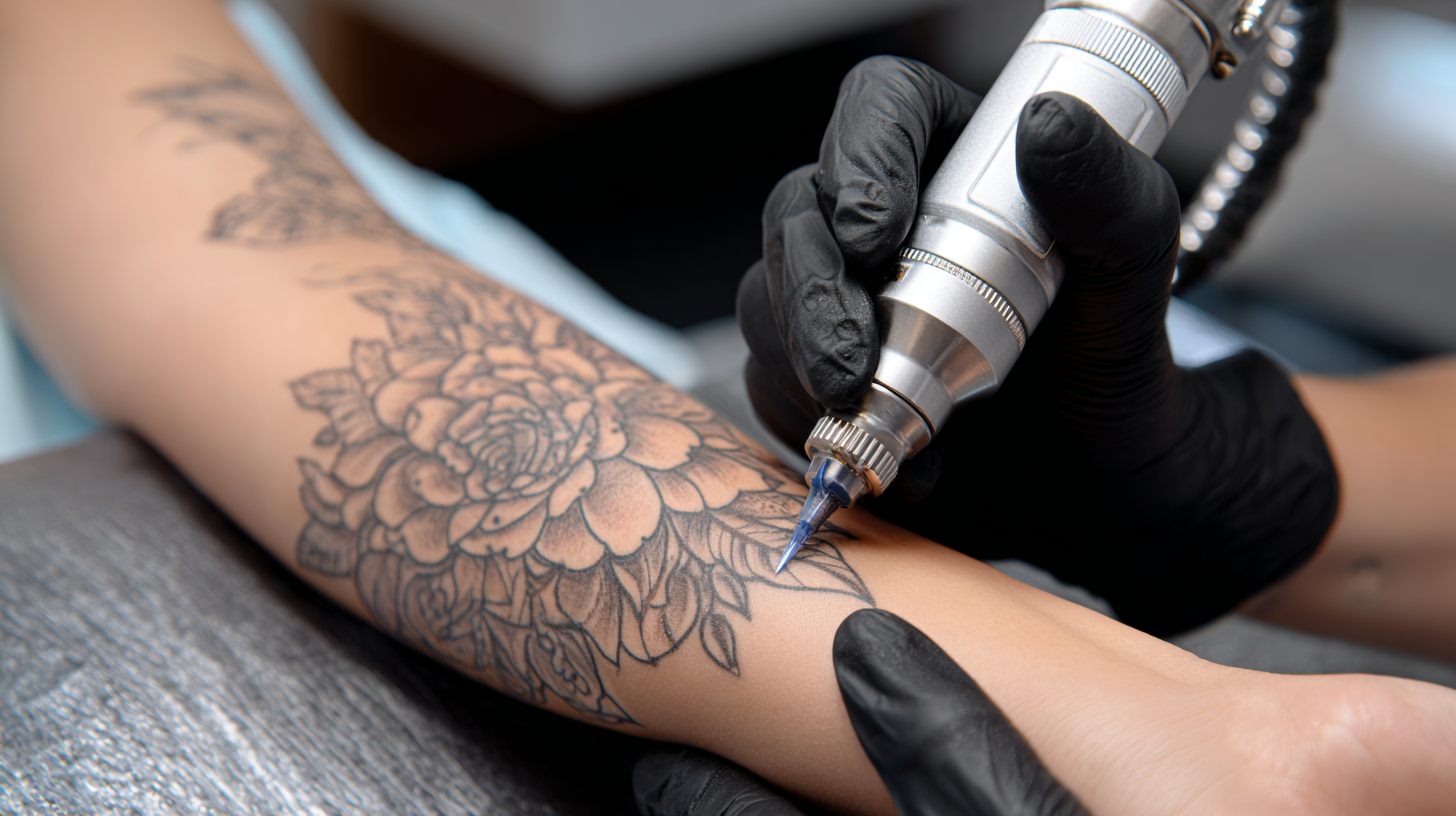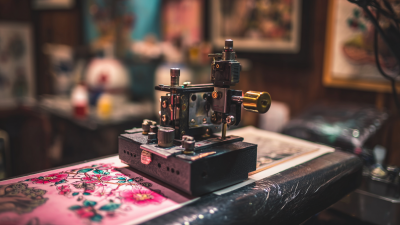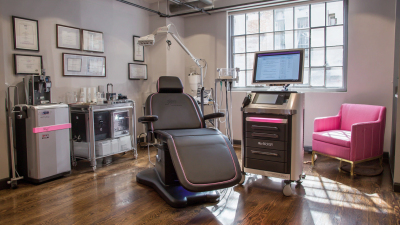How to Effectively Choose a Laser Tattoo Removal Machine: Insights from Industry Experts and Statistics
In the ever-evolving landscape of the tattoo removal industry, the selection of an appropriate Laser Tattoo Removal Machine is critical for both practitioners and clients. According to a recent report by the American Society for Aesthetic Plastic Surgery, tattoo removal procedures have increased by over 440% since the year 2000, highlighting a growing demand for effective solutions in this field. With various types of lasers available, including Q-switched and Pico lasers, it is essential to understand the intricacies involved in choosing the right technology.

Industry experts emphasize that factors such as wavelength versatility, pulse duration, and the machine's ability to accommodate different skin types are pivotal in ensuring optimal results. Additionally, a survey conducted by the International Journal of Dermatology indicates that patient satisfaction rates significantly improve when clinics invest in high-quality, clinically proven laser devices. Therefore, making an informed choice about Laser Tattoo Removal Machines is not only a matter of technological investment but also a commitment to delivering exceptional care to clients seeking to erase their past ink.
Key Factors to Consider When Selecting a Laser Tattoo Removal Machine
When selecting a laser tattoo removal machine, there are several key factors to consider that ensure effectiveness and safety. First and foremost, understanding the type of laser technology used is essential. Nd:YAG lasers are commonly favored for their versatility and efficacy in targeting various ink colors, as evidenced by recent studies examining their performance in controlled environments. These lasers adjust parameters such as pulse duration, which significantly affects treatment outcomes.
Moreover, the machine's safety features must not be overlooked. Devices that incorporate advanced cooling mechanisms can enhance patient comfort and minimize the risk of skin damage. It's also important to consider the machine's ease of use and maintenance requirements, ensuring that operators can efficiently manage workflows without compromising safety standards.
**Tips:** Before making a purchase, consult with industry experts and gather insights on the latest advancements in laser technology. Additionally, always review the machine's clinical studies and user testimonials to gauge real-world efficacy. Lastly, investing in a device with robust customer support can be invaluable for ongoing maintenance and training.
How to Effectively Choose a Laser Tattoo Removal Machine
| Key Factor | Description | Importance (1-10) | Common Configurations |
|---|---|---|---|
| Type of Laser | Different lasers (Q-switched, picosecond, etc.) target various ink colors and skin types. | 9 | Nd:YAG, Ruby, Alexandrite |
| Wavelength | Different wavelengths are effective for different colors of ink. | 8 | 532 nm, 1064 nm |
| Pulse Duration | Shorter pulse durations are better for pigmentation and safe for skin. | 7 | 1 ns, 10 ns |
| Energy Output | Higher energy allows for faster removal but requires skill to manage. | 8 | 0.5-2.0 J/cm² |
| Cooling System | Effective cooling systems prevent damage to surrounding skin. | 9 | Contact or cryogenic systems |
| Ease of Use | User-friendly interface and features facilitate better treatments. | 7 | Touchscreen controls, pre-set settings |
| FDA Approval | Ensure the device is approved for safety and efficacy. | 10 | Class II Medical Device |
Understanding Different Laser Technologies and Their Effectiveness
When choosing a laser tattoo removal machine, it is crucial to understand the various laser technologies available and their effectiveness in different scenarios. The two primary types of lasers used in tattoo removal are Q-switched lasers and Pico lasers.
 Q-switched lasers, such as the Nd:YAG and Ruby lasers, emit energy in short bursts that target the ink particles, causing them to fragment and be absorbed by the body. These lasers are well-suited for dark inks but may require multiple sessions for complete removal, depending on the tattoo's size and color.
Q-switched lasers, such as the Nd:YAG and Ruby lasers, emit energy in short bursts that target the ink particles, causing them to fragment and be absorbed by the body. These lasers are well-suited for dark inks but may require multiple sessions for complete removal, depending on the tattoo's size and color.
On the other hand, Pico lasers utilize picosecond technology, which delivers ultra-short pulses of energy, resulting in less thermal damage to the surrounding skin. This method is particularly effective for treating a broader range of ink colors, including stubborn shades like green and blue. Studies have shown that Pico lasers can achieve significant results in fewer treatment sessions, making them an attractive option for both practitioners and clients. Understanding these differences helps potential buyers make informed decisions as they navigate the complexities of tattoo removal technology.
Analyzing Cost-Effectiveness: Budgeting for Equipment and Maintenance
When budgeting for a laser tattoo removal machine, understanding the cost-effectiveness of the equipment is paramount. Industry experts emphasize that the initial investment in a high-quality machine can significantly influence long-term profitability. It’s essential to compare the upfront costs with the potential revenue generated by the services offered. While some machines may have a lower purchase price, they might lack the advanced features and efficacy, leading to higher operational costs and dissatisfied clients in the long run.

Maintenance is another critical factor to consider in the budgeting process. Regular servicing, replacement parts, and consumables can add up quickly. Statistics show that clinics that allocate funds for proactive maintenance report fewer unexpected breakdowns, reducing downtime and ensuring more consistent revenue streams. Additionally, a well-maintained machine can enhance treatment results, thereby attracting more clients and fostering positive word-of-mouth referrals. Ultimately, effective budgeting for both equipment and its maintenance not only ensures a smooth operation but also amplifies the return on investment in the competitive tattoo removal market.
Importance of Compliance and Safety Standards in Tattoo Removal Equipment
When selecting a laser tattoo removal machine, compliance and safety standards should be a top priority. According to a recent industry report from the American Society for Laser Medicine and Surgery, tattoo removal devices must meet stringent FDA regulations to ensure they are safe and effective for use. Equipment that adheres to these guidelines not only minimizes risks for clients but also enhances the overall reputation of the service provider. A study found that clinics using FDA-approved machines reported 85% higher patient satisfaction rates compared to those using non-compliant equipment.
Tip: Always verify the certifications and compliance records of any laser equipment before making a purchase. This will not only safeguard the health of your clients but also protect your practice from potential legal issues.
Moreover, understanding the significance of safety features in tattoo removal machines is vital. A report by the International Society of Aesthetic Plastic Surgery revealed that clinics with advanced safety mechanisms, such as integrated cooling systems and accurate wavelength settings, face fewer complications during treatments. Ensuring that your equipment comes equipped with these safety features can greatly reduce the chances of client discomfort or adverse reactions.
Tip: Look for machines with built-in safety measures like skin cooling technology and adjustable laser wavelengths to enhance treatment outcomes and client comfort.
Evaluating Customer Reviews and Clinical Results for Informed Decisions
Choosing the right laser tattoo removal machine is crucial for both practitioners and clients seeking effective removal options. One of the best ways to evaluate potential machines is through customer reviews. These testimonials provide insight into the actual performance of the equipment in real-world settings. Customers often share their experiences regarding pain levels, treatment efficacy, and overall satisfaction, allowing prospective buyers to gauge whether a machine meets their specific needs.
In addition to customer reviews, examining clinical results can inform better decision-making. Data from medical studies can reveal how various machines perform across diverse skin types and tattoo inks. Industry statistics regarding clearance rates, side effects, and recovery times serve as valuable benchmarks. By synthesizing feedback from users alongside clinical data, practitioners can make informed choices that enhance their service offerings and provide clients with realistic expectations regarding their tattoo removal journeys.
Laser Tattoo Removal Machine Comparison
Related Posts
-

Understanding the Fundamentals of Laser Tattoo Removal Machines: A Comprehensive Guide
-

2025 Market Insights: How to Choose the Best Tattoo Removal Machine for Your Business
-

How to Choose the Right Laser Removal Machine for Your Business Needs
-

7 Essential Tips to Elevate Your Laser Beauty Equipment Business
-

Exploring Innovative Alternatives to Oxygen Jet Machines in Aesthetic Treatments
-

How to Choose the Right Cavitation Machine for Your Business Needs
